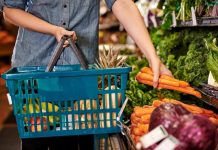
Not everyone can afford their groceries. Luckily, the federal government understands that this is a common issue for Americans, which is why they have a variety of food assistance programs that can help those in need. One specific program is the Commodity Supplemental Food Program (CSFP). Many Americans don’t realize that this food support opportunity exists, let alone know how it can help. Hopefully, this article will be able to provide some helpful information on this program!
What is the Commodity Supplemental Food Program (CSFP)?
The focus of CSFP is on low-income seniors that are at least 60 years old. This program aims to supplement the diets of those that qualify with nutritious United States Department of Agriculture (USDA) foods. The USDA will provide both funds and food to states that participate to operate this program (as well as Indian Tribal Organizations). This program is administered at the federal level through the Food and Nutrition Service (FNS). The FNS is an agency of the USDA. CSFP has been around since 1973 and is authorized under the Agriculture and Consumer Protection Act.
How Can CSFP Help?
While the food packages that come from CSFP cannot provide the amount needed for a complete diet, it is still helpful. That’s because the food packages aim to provide supplemental support to those that qualify. Plenty of people see benefits from this program. On average roughly 676,000 participate in the program every month in a fiscal year.
Some of the foods that can come along in CSFP food packages include:
- Non-fat dairy milk
- Ultra high-temperature fluid milk
- Juice
- Grains
- Ready-to-eat cereal
- Peanut butter
- Dry beans
- Canned meat
- Poultry
- Canned fruits
- Canned vegetables
Is CSFP Available in Every State?
Yes! This program is authorized to operate in all 50 states– but that’s not all. CSFP can also operate in the District of Columbia, Puerto Rico, and Indian Tribal Organizations (ITOs). Only the following ITOs are authorized to participate in this program:
- Oglala Sioux (SD)
- Red Lake (MN)
- Seminole Nation (OK)
- Shingle Springs Band of Miwok Indians (CA)
- Spirit Lake Sioux Tribe (ND)
It’s important to keep in mind that states have the discretion to create local residency requirements depending on the designated service area. However, they cannot require a minimum period of residency. Other requirements that states may impose include requiring that recipients be at nutritional risk. Nutritional risk can be determined by either local agency staff or a physician.
How to Get More Information?
If you want to learn more information about this program or begin the application process you will need to get in touch with your CSFP state agency.
Alternative Food Assistance Programs
Besides CSFP there are other food assistance programs that can help people in need. These programs include:
- Supplemental Nutrition Assistance Program (SNAP)
- Special Supplemental Nutrition Program for Women, Infants, and Children (WIC)
- Disaster Supplemental Nutrition Assistance Program (D-SNAP)
Supplemental Nutrition Assistance Program
One of the most popular food assistance programs in America is SNAP. This is a support opportunity that can help individuals in need get support for their groceries. SNAP can provide benefits to people in the form of an Electronic Benefit Transfer (EBT) card. These cards are filled with money every month that can go towards qualifying groceries at stores that accept these cards as a form of payment. The amount that recipients can get will depend on information on their application like income level and family size. For example, between Oct. 1, 2023, through Sept. 30, 2024, the maximum benefits of this program are:
- $291 for a Household of 1
- $535 for a Household of 2
- $766 for a Household of 3
- $973 for a Household of 4
- $1,155 for a Household of 5
- $1,386 for a Household of 6
- $1,532 for a Household of 7
- $1,752 for a Household of 8
- $219 for each additional person after a household of 8
It’s important to keep in mind that the maximums listed above are only for households in 48 contiguous states and the District of Columbia. There are different maximums for households that live in Alaska, Hawaii, Guam, and the U.S. Virgin Islands. If you are interested in receiving benefits from this program you will need to get in touch with your state SNAP office.
Special Supplemental Nutrition Program for Women, Infants, and Children (WIC)
Just as CSFP focuses on a specific group of people, so does WIC. This government program aims to help eligible low-income individuals that are at nutritional risk. This includes those that are:
- Pregnant (throughout the pregnancy and up to 6 weeks after the baby is born or the pregnancy ends)
- Breastfeeding until the baby is one year old
- Not breastfeeding and for up to six months after the baby is born or the pregnancy ends
- Infants until they are one year old
- Children until they turn five years old
Those that can qualify can receive benefits like getting supplemental nutritious foods, receiving nutrition education and counseling at WIC clinics, accessing health care referrals, healthcare screenings, welfare services, social services, etc. This program is provided at the federal level by the Food and Nutrition Service (FNS) but it is administered by 89 WIC state agencies that have roughly 47,000 authorized retailers. If you want to learn more information on how to benefit from this program you will need to reach out to your state or local agency to set up an appointment.
Disaster Supplemental Nutrition Assistance Program (D-SNAP)
Another opportunity to consider is D-SNAP. This is a food assistance program that aims to help qualifying households that are dealing with food loss or damage as a result of a natural disaster. Not any state can participate to run this program. Instead, a state must first receive an Individual Assistance declaration from the president. Once they receive this declaration, they will need to request approval from the FNS. They will need to get approval to operate the program!
Once a state has that approval, qualifying recipients will receive an Electronic Benefit Transfer (EBT) card. The card will work similarly to how it does in SNAP. That means the funds that get loaded onto the card will be able to buy qualifying food items at locations that accept the cards as a form of payment. Since this program focuses on those dealing with a disaster, the general requirements reflect that. A person may be able to qualify if they are dealing with the following disaster-related expenses:
- Business repairs
- Home repairs
- Temporary shelter expenses
- Evacuation expenses
- Relocation expenses
- Personal injury expenses
- Funeral expenses
- Limited or loss of access to income due to the disaster for a good portion of the benefit period
If you want to apply or learn more information, you will need to be on the lookout for information from your state agency. This will be the source where you can learn about how to apply, the qualifications needed to be eligible, etc.
Bottom Line
When it comes to food assistance opportunities, there are a variety of options available. One option, in particular, is the Commodity Supplemental Food Program (CSFP). This program focuses on eligible low-income seniors that could benefit from supplemental nutrition support. Besides this food assistance opportunity, other options to consider include:
- Supplemental Nutrition Assistance Program (SNAP)
- Special Supplemental Nutrition Program for Women, Infants, and Children (WIC)
- Disaster Supplemental Nutrition Assistance Program (D-SNAP)
You may have more opportunities for food support than you realize. You just need to know what’s out there!




























